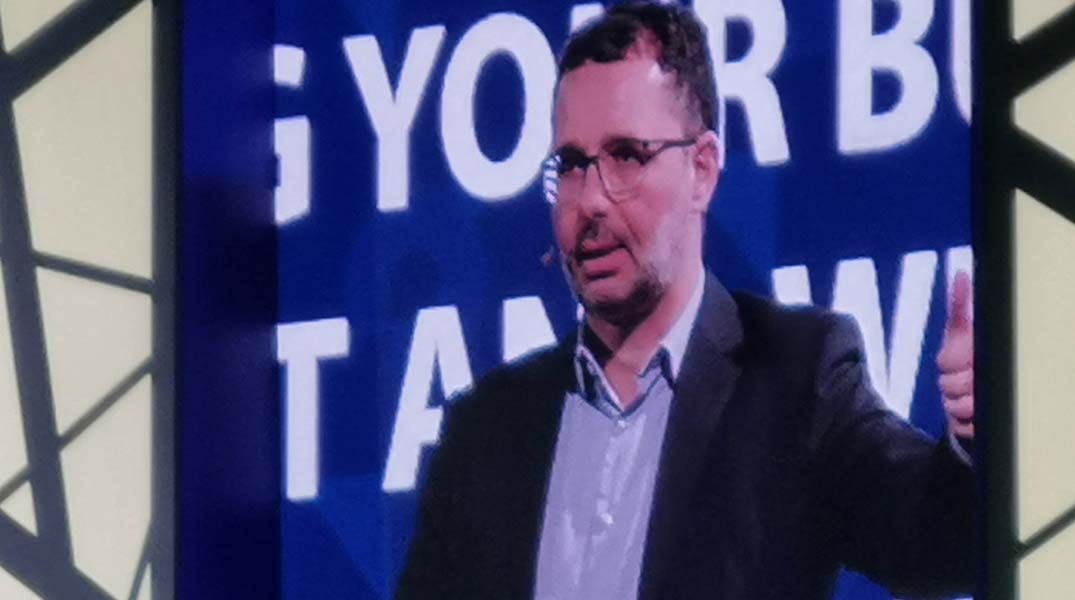Kathy Gibson reports from Saphila 2023 – Any digital transformation or business transformation exercise boils down to business process transformation.
“The end of the project is not the end of the story,” says Wassilios Lolas, global vice-president and head of the Signavio Centre of Excellence at SAP. “It is the beginning.”
SAP has been in this business for a long time and customers all tell them the same things: it is hard to get the business excited about IT transformation and that transformation is often IT-driven not business-driven.
“We see that customers face two major internal challenges: the one is the C-level perspective; and the other is the businesses and IT realities.”
One the one side, the CEO wants to move quickly, be more agile, able to respond to changing businesses or crises.
On the other side, the reality is the complexity of systems and huge variety of processes.
In most cases, business and IT have grown in complexity together and often lose control of where they are.
Almost all companies find themselves in the position of facing enormous complexity, so they don’t know where or how to start their transformation.
Once a project has started it takes months to prepare, to implement, and to go live – it is too time-consuming.
And once the solutions are up and running, customers often find they have not created enough business value.
“It is this complexity on one side, and the disconnect between business and IT on the other, leading to the decision to move the old ECC systems, as is, without trying to implement changes,” says Lolas.
To make it more complicated, decision-makers want facts to make data-driven decisions.
“But it is very hard to fix past mistakes if you don’t know where they are, or how they run today.”
Typically, these problems are solved by external consultants. It takes a lot of time and money – and, at the end, only a part of the picture is uncovered.
The end result is that no-one really trusts the answers and business models that don’t necessarily reflect the reality are produced.
SAP has launched Signavio, what it calls a plug-and-gain approach to running a RISE initiative and transforming processes fast and with confidence.
Lolas points out that a transformation project usually includes preparation, deployment, and run phases.
In the preparation phase, it is literally as simple as connecting the SAP system to Signavio. This gives the fastest time to direct insight, offering C-level driver summaries, over 1 000 process performance indicators, almost 100 process flows, most frequent blockers, industry-level benchmarks, and more than 1 000 recommendations.
This preparation step can be done in literally a couple of hours, Lolas says. Teams can quickly decide which processes need to be fixed or changed using trusted data.
In deciding how to proceed with business process transformation, Signavio offers the fastest time to deeper intelligence through process variant analysis, process execution investigations, pre-defined dashboards, detailed mining analysis, and best scores across key process areas.
Signavio now includes a best run score comparing the way a process is executed with the best way it could be run. “This comparison gives you an understanding about the best possible performance versus how a business unit is actually performing,” Lolas explains.
The final piece of the preparation picture is the faster time to business process design. It does this via reverse engineering of process models, identifying the company’s best-run execution, defining the to-be processes, and simulating the final process. Signavio offers a library of more than 7 000 best-practice processes that can be plugged in if relevant.
These preparation capabilities are on a platform of process reference content, and collaboration and governance.
The second phase, deployment, is about bringing together the worlds of business and IT.
Signavio helps enterprises to deploy faster, offering a collaboration hub that facilitates collaboration and governance between business and IT. The Solution Manager/cloud application lifecycle manager makes application lifecycle management easier. Meanwhile, the Central Business Configuration helps to ensure applications are properly configured.
Signavio offers fast insights when running the processes, enabling continual innovation.

